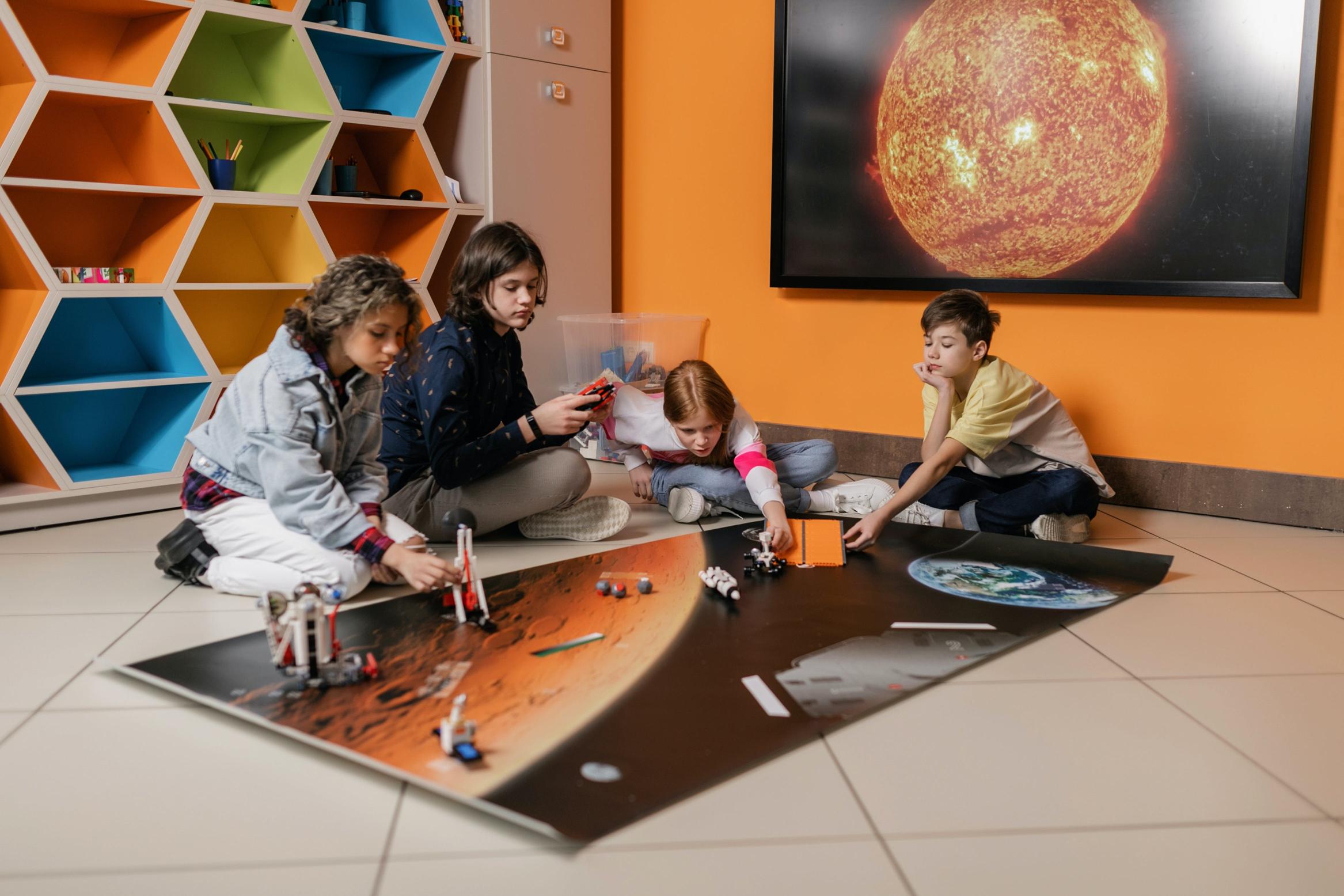Welcome to the digital design realm where the art of crafting user-friendly interfaces takes center stage. In today’s world, the ability to build an interface that speaks the user’s and smoothens their journey is not just an asset, but a necessity. Whether you’re a seasoned designer, a developer looking to enhance your project’s user experience, or a curious entrepreneur aiming to captivate your audience, understanding how to create user-friendly interfaces is key to success.
In this blog, we’ll delve into the principles and practices that will help you design interfaces that are not only visually appealing but also intuitively navigable, ensuring a seamless user experience.
Understanding the principles of user-friendly design

Understanding the principles of user-friendly design is essential in the digital age, where the interface is the bridge between technology and the user. It’s the line where communication is often non-verbal, and yet, its clarity can speak volumes.
In the quest for the perfect user-friendly interface, designers must navigate a landscape that blends functionality with simplicity, intuitiveness with innovation. To create user-friendly interfaces, one must delve deep into the psyche of the end user, anticipating needs and shaping experiences that resonate on a fundamentally human level. Foremost in the construction of a user-friendly interface is the principle of intuitiveness.
Just as no one needs a map to navigate their own living room, an interface should guide users seamlessly to their destination without complexity or confusion. Take, for example, the home screen of a smartphone. Users can intuitively navigate applications, settings, and functions due to the familiar, consistent, and predictably designed layout.
The applications are represented by touchable icons, logically grouped, and arranged in a grid that minimizes the need for thought or learning. This intuitive design translates across different devices and platforms, serving as a universal that users worldwide can understand.
Yet, simplicity in design does not equate to a lack of depth. The balance here calls for accessible complexity – a way to present sophisticated functionality without overwhelming the user. An excellent example of this principle can be seen in software like Photoshop.
While the depth of tools and features in Photoshop is profound, the basic functions are easy to grasp for a beginner. Icons are visually representative, menus are organized according to use-case, and the most common tools are prominently displayed, while the rest waits unobtrusively, tucked away until needed.
As such, even users with a surface level of experience can accomplish basic tasks, yet the interface also caters to the deep dive of a professional. It is the hallmark of a design that can meet users where they are, and still offer a ladder to climb to new heights of mastery. In the process of cultivating user-friendly interfaces, the journey from concept to execution should always be paved with testing and feedback. After all, what better way to gauge the usability of a product than by the very individuals who will be engaging with it on a daily basis? It’s a loop of dialogue between the creator and the consumer, a partnership that polishes the raw stone of innovation into a jewel of user-friendly design. Creating user-friendly interfaces is an art form that marries technical acumen with empathetic design. As we continue to craft virtual spaces where humans and technology meet, understanding these principles is not just a nicety—it’s imperative. It is a signpost guiding us through the dense forest of buttons, menus, and screens, ensuring that everyone, no matter their skill level, can navigate the digital world with confidence and ease.
The role of usability testing in interface creation

The Role of Usability Testing in Interface CreationWhen embarking on the creation of user-friendly interfaces, one can liken the process to crafting a gateway through which the virtual world becomes accessible to the user. This is where the practice of usability testing comes into play—an indispensable tool in the interface designer’s arsenal. It’s not merely about etching out aesthetically pleasing elements on the screen, but rather ensuring that their choreography resonates with the intuitive dance of the user’s mind.
Through systematic usability testing, designers can transcend the boundary of good looks to arrive at the touchstone of exceptional user experience. Central to this journey of interface creation is the user’s interaction with the digital environment.
A user-friendly interface should feel as natural as having a conversation with an old friend; it’s effortless, intuitive, and free from unnecessary complications. Usability testing enables these nuances to be captured by inviting real users to interact with various iterations of an interface.
As they navigate through, they unravel layers of the design, revealing insights that, to the designer’s trained eye, are worth their weight in gold. Common methodologies like 'think aloud’ protocols, where users verbalize their thought processes, or task completion tests, which measure how effectively a user can use the interface to perform specific tasks, become the compasses that guide designers in refining their digital landscapes. Let’s paint a familiar picture: imagine a bustling airport with its myriad of signs, kiosks, and gates.
A traveler’s ability to swiftly find their way from check-in to the appropriate departure gate is dependent on clear, intuitive signage. This is what usability testing seeks to emulate in the digital world.
Take, for instance, an e-commerce platform. Usability testing might uncover that shoppers often abandon their carts not because they no longer wish to make a purchase, but because the checkout process is as labyrinthine as a back-alley bazaar. By identifying these obstacles, designers can streamline the process, much like an airport ensuring there’s a clear, unobstructed path to each departure gate.
Herein lies the soul of usability testing: it is not just about identifying what looks good, but ensuring that the interface operates with an internal logic that resonates with human behavior. In essence, usability testing provides the scaffolding for building interfaces that not only capture the user’s eye but more crucially, their flow of thought and action. It affords designers a vital glimpse into the mind of the user, allowing them to sculpt a digital experience that feels less like a contraption and more like an extension of oneself. After all, the most profound of designs are those that seem to vanish, leaving behind nothing but the sheer joy of a task effortlessly achieved.
Balancing aesthetics and functionality for optimal user experience

Balancing aesthetics and functionality for optimal user experience is somewhat akin to the tightrope act at a circus. On one side, you have the visually stunning, designed to captivate and engage, while on the opposite side, you find the ultra-functional, streamlined for ease and efficacy.
In the thrilling walk between the two, creating user-friendly interfaces becomes an exercise in harmony, a dance choreographed to the tune of user satisfaction. Let’s dive into the nitty-gritty of this equilibrium, shall we? Picture a sleek, minimalist app – it’s the digital equivalent of a modernist painting in an art gallery.
It draws you in with its clean lines and a serene palette. Yet, the moment you interact with it, there’s a sense of puzzlement. Where do I click?
Is that a button or a decoration? This is where functionality elbows its way in.
A user-friendly interface isn’t just about looking pretty; it’s about intuitive navigation and clear calls to action. It’s ensuring that your user isn’t just admiring your interface but engaging with it effortlessly. Now, consider the reverse: a site so crammed with buttons, widgets, and instructions that it feels like you’ve walked into a control room you’re absolutely unqualified to operate.
This is what happens when functionality bulldozes aesthetics under the pretense of utility. A cluttered interface can be just as off-putting and hard to navigate as one that is overly artistic.
A truly user-friendly interface marries the two, taking the efficient skeleton of functionality and dressing it with just enough aesthetic appeal to entice and delight users. It’s about guiding them, with visual cues and logical design, to explore and interact without getting lost or overwhelmed. Ultimately, the art of balancing aesthetics with functionality is about understanding the user’s journey. It’s akin to being a mapmaker and a storyteller, where every visual element and functional space are plotted with purpose. For example, choosing a font isn’t just a stylistic decision but one of readability. Selecting a color scheme goes beyond trends, considering the emotional impact colors have. It’s about the strategic use of white space to direct focus, or the subtle animations that breathe life into the interface without distracting from the task at hand. Aim for a convergence of form and function that not only serves its primary purpose but elevates the entire user experience to something genuinely memorable. That’s the sweet spot, the precise balance that interfaces aspire to achieve and that users subconsciously crave.
Adapting interfaces for accessibility and inclusivity
### Adapting Interfaces for Accessibility and InclusivityCreating user-friendly interfaces extends far beyond the allure of aesthetic design and into the noble realm of accessibility and inclusivity. At its heart, this design philosophy espouses the notion that digital spaces should welcome everyone, regardless of ability or circumstance. This is no mere afterthought; it is a foundational step in constructing a digital environment that reflects the diverse tapestry of its users.
Imagine navigating a website with your eyes closed. For many, this is not an exercise in imagination but a daily reality.
Designing with accessibility in mind means incorporating features like screen readers, which convert text to speech or Braille, and ensuring that interactive elements can be navigated with keyboard commands for those who cannot wield a mouse. Color contrasts must be considered for the colorblind, while content should not solely rely on color to convey important information.
Typography also plays a pertinent role; ensuring that text can be resized without loss of functionality makes your interface more legible for users with visual impairments. But user-friendly interfaces that champion accessibility and inclusivity do more than accommodate physical considerations. They also embrace the full spectrum of cognitive diversity.
This involves designing forgiving interfaces that allow for easy error correction, providing clear and consistent navigation cues, and avoiding overstimulating the user with excessive animations or intricate layouts that can confuse or distract. It means using plain to communicate effectively and providing alternative ways to experience multimedia content. For instance, video content should include captions for those who are deaf or hard of hearing, and alternative text for images aids users who rely on screen reading tools.
At the intersection of compassion and technology lies the imperative to design with empathy, to craft experiences that don’t simply look good but feel good for everyone. User-friendly interfaces aren’t a luxury; they’re a signpost of a mature, socially responsible digital landscape.
When we adapt our interfaces for accessibility and inclusivity, we send a powerful message that all users are valued and their experiences matter. It is in these thoughtful design choices that true user-friendliness is found, transforming intangible goodwill into tangible action.
Leveraging feedback and analytics to refine user interfaces
In the dance between humans and technology, the creation of user-friendly interfaces is akin to perfecting an elaborate choreography. It’s not just about making the buttons look pretty; it’s about ensuring each step is intuitive, each twirl is expected, and each pause is a natural breath in the user’s journey.
To master this artful alignment, designers and developers must embrace the rhythm of feedback and analytics, two powerful partners in refining user interfaces. Feedback is your unabashedly honest dance instructor, pointing out the missteps in your interface choreography. It comes in many forms: from the sighs of frustration escaping a user trying to navigate your site, to the focused critiques in a usability testing session.
Every piece of feedback is a cue to reassess and refine the user experience. Take, for example, the legendary redesign of Airbnb’s interface, where extensive user feedback led to the creation of a more intuitive search function and fluid booking process — a redesign that catalyzed their meteoric rise to success.
By actively seeking out and addressing user’s concerns, grievances, and stumbling blocks, interfaces can be transformed into smooth, enjoyable experiences. Analytics, on the other hand, are the silent but insightful judges scoring your routine; they deliver data-driven insights into user behavior without saying a word. By examining metrics such as click-through rates, time spent on page, and conversion rates, one can infer where users glide through the experience with ease and where they falter.
Consider the pioneering approach of Netflix in leveraging viewer analytics to not only recommend content but also to optimize their interface for maximum engagement. They observe patterns, test changes, and evolve, ensuring that each suggestion feels as personalized and effortless as having a friend hand you the remote.
Uniting feedback and analytics in the quest for the ultimate user-friendly interface is a performance that never truly ends. With each iteration, with every slight adjustment informed by human experience and cold, hard data, the interface becomes not just a tool, but a seamless extension of human intent. This eternal waltz of refinement ensures that your users will stay engaged, delighted, and most importantly, eager for the next dance.
Nasza rekomendacja video
Summary
In conclusion, crafting user-friendly interfaces requires a focus on simplicity, consistency, and intuitiveness. By prioritizing clear navigation, responsive design, and accessibility, designers can ensure a seamless user experience. Testing with real users and incorporating feedback is crucial for continuous improvement.
Remember, a user-friendly interface is key to engaging and retaining users in the digital space.
FAQ
What are the key principles of user-friendly interface design?
The key principles of user-friendly interface design include simplicity, consistency, intuitive navigation, clear visual hierarchy, and accessibility. Interfaces should be designed to meet user needs with minimal effort, providing easy-to-understand options and feedback to guide users through their tasks effectively. Additionally, designs should be inclusive, ensuring that users of all abilities can interact with the interface comfortably.
How can user research inform the creation of more intuitive interfaces?
User research provides direct insights into the needs, behaviors, and pain points of the target audience, allowing designers to create interfaces that align with users’ expectations and natural interactions. By understanding the user’s journey, preferences, and the context of use, designers can craft more intuitive interfaces that feel familiar, reduce learning curves, and improve overall user satisfaction. This evidence-based approach ensures that design decisions are grounded in actual user data rather than assumptions, leading to a more user-centric product.
What role does accessibility play in designing user-friendly interfaces, and how can it be implemented effectively?
Accessibility is crucial in designing user-friendly interfaces as it ensures that products are usable by people with a wide range of abilities, including those with disabilities. This inclusivity enhances the user experience for a broader audience and can be effectively implemented by adhering to established guidelines such as the Web Content Accessibility Guidelines (WCAG), incorporating accessible design principles from the outset, and involving people with disabilities in user testing to ensure that the interface meets their needs.
In what ways can visual design elements enhance the user-friendliness of an interface?
Visual design elements can enhance the user-friendliness of an interface by improving navigation through intuitive layout and visual cues, making information easily digestible with clear typography and color contrasts, and creating a pleasing aesthetic that encourages user engagement and reduces cognitive load. By guiding the user’s eye and attention with well-thought-out design principles, interfaces become more accessible and easier to use.
How can usability testing be used to refine interface designs for better user experience?
Usability testing allows designers to observe real users interacting with their interfaces, identifying specific pain points and areas of confusion. By analyzing user behavior and feedback, designers can make targeted adjustments to improve the intuitiveness, efficiency, and overall satisfaction of the user experience. This iterative process ensures that the final design is user-centric and tailored to meet the needs and expectations of the target audience.
What are some common pitfalls to avoid when aiming to create a user-friendly interface?
Some common pitfalls to avoid when designing a user-friendly interface include neglecting user feedback, which can lead to a lack of understanding of the user’s needs and preferences. Overcomplicating the design with excessive features or content can overwhelm users, while insufficient testing across different devices and user scenarios can result in a lack of accessibility and compatibility. It’s crucial to maintain a balance between aesthetics and functionality to ensure the interface is both appealing and intuitive to use.

